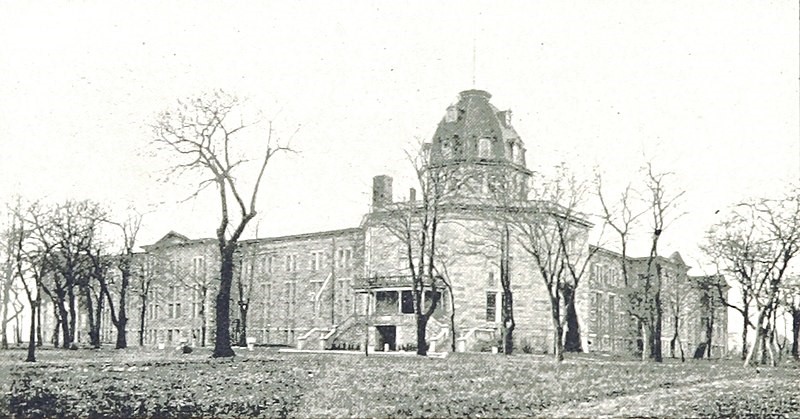Our idea of adventure today might be a road trip to a new destination, or simply getting on a terrifying roller coaster. However, what we envision never seems to include what we watch in movies, like going undercover and spying on an enemy, or traveling around the world in the least amount of days as possible. For journalist Elizabeth Cochrane Seaman, also known by her pen name Nellie Bly, these almost impossible events became realities as her career offered her these kinds of opportunities.1 Even though these assignments seem thrilling, Bly not only completed them of her own free will, but did so to help others by informing the public of various unacceptable behaviors that people were treating others to behind closed doors. There was no doubt in her mind that she would pass up an opportunity to use her gift as an exceptional reporter to liberate those being mistreated who had no voice to be heard. In one of Bly’s early assignments, she willingly allowed herself to be treated as one deemed to have a mental illness. In the 1880’s, she personally experienced the horrors that mentally ill patients went through. in order to have personal insight on the matter.
Bly was still new to journalism and in 1887 editors rarely hired women, so when Joseph Pulitzer’s New York World, a leading newspaper company at the time, offered her the opportunity to investigate an insane asylum, she did not hesitate to accept.2 Bly had so much confidence in herself that she had little doubt that she would be able to pull off the act of being insane. The asylum was located in New York on Blackwell’s Island, where it was known to be easy to get in, but nearly impossible to get out. She had read previous documents about the mistreatment of the mentally unstable and assumed they were all over dramatized; however, she knew little of what she would soon come to experience firsthand.3

Bly started this journey with seventy cents and a single promise from her editor that he would get her released after she spent ten days in the asylum on Blackwell’s Island, even if that meant exposing her identity.4 Bly first began by checking herself into a boarding house for women, and with some acting under her cover name Nellie Brown, she staged an encounter with the police. This soon led four doctors to claim she was insane, and soon after, Bly found herself riding in an ambulance on her way to Blackwell Island.
Once settled into the daily routine that doctors had for the patients at the asylum, Bly began to notice what was occurring within the facility. What happened behind the walls of this mental institution consisted of common mistreatment, such as having few heaters so everyone was freezing, forcing patients to shower in ice cold baths, and feeding them very small portions of food with repulsive tastes.5 The treatment became worse as the attendants were abusive and this misconduct was slowly integrated into part of the day-to-day procedure at the asylum, which Bly had to cooperate with.6 However, she was not alone, as she met other women in the institute that did not have any mental illnesses either, but had been checked in because of miscommunication and other various reasons.
The women Bly encountered each had their own story and explanation for how they ended up in this horrifying mental hospital. One woman specifically had no need to be there, but since she mostly spoke French, she was unable to tell the doctors her story, and because she was crying in fear of never being released, the attendants choked her. Bly recorded many cases such as this one, when women would be hurt and nobody would speak up and change it. The injures towards one of the women resulted in a black eye, and when the doctors asked about it, the nurses claimed she entered the facility with it. Many others shared with Bly the details of the abuse they encountered, including Mrs. Cotter:
Then they tied my hands and feet, and, throwing a sheet over my head, twisted it tightly around my throat, so I could not scream, and thus put me in a bathtub filled with cold water. They held me under until I gave up every hope and became senseless. At other times they took hold of my ears and beat my head on the floor and against the wall. Then they pulled out my hair by the roots, so that it will never grow in again.7

As promised, Bly’s editor got her out of the asylum ten days later, and soon after, Bly was able to share the outrage she discovered on her assignment with the world.8 Bly became that needed voice the patients in Blackwell’s Island Asylum were lacking, leading to a contribution of one million dollars per year towards caring for those with mental illnesses in New York City. This dreadful news had shocked the public and had given Bly the publicity she needed to boost her career. Yet she did not stop there. Bly continued with her passion of reporting and went undercover in places such as women’s prisons, and later traveled to the front lines during War World I.9 During Bly’s profession as a journalist she changed the views that individuals had towards the poor and helpless and how they should be treated in the hopes of having a future in which all people would be given the respect and dignity they deserve.
- Richard Ernsberger Jr., “Nellie Bly: Fearless Reporter,” American History 50, no. 2 (June 2015): 77. ↵
- MasterFILE Premier, August 2017, s.v. “Nellie Bly,” by Keira Stevenson. ↵
- Nellie Bly, Ten Days in a Mad-House (New York: Ian L. Munro, 1887), 1. ↵
- Nellie Bly, Ten Days in a Mad-House (New York: Ian L. Munro, 1887), 3. ↵
- Nellie Bly, Ten Days in a Mad-House (New York: Ian L. Munro, 1887), 13. ↵
- MasterFILE Premier, August 2017, s.v. “Nellie Bly,” by Keira Stevenson. ↵
- Nellie Bly, Ten Days in a Mad-House (New York: Ian L. Munro, 1887), 14. ↵
- Jean Marie Lutes, “Into the Madhouse with Nellie Bly: Girl Stunt Reporting in Late Nineteenth-Century America,” American Quarterly 54, no. 2 (2002): 218. ↵
- Richard Ernsberger Jr., “Nellie Bly: Fearless Reporter,” American History 50, no. 2 (June 2015): 77. ↵



77 comments
Benjamin Voy
Its so interesting that this woman would go to such lengths in order to be a journalist. Its woman like this that prove woman can do pretty much everything a man can do. She was a pioneer in her profession and showed that the modern day journalist needs to put themselves in the situations of what their writing about rather than just looking at it and writing about it from a far. Great article.
Michelle Falcon
I truly loved reading this article, and the story that it told. Nellie went above and beyond to uncove the truth about what was truly going on at the Blackwell insane asylum. These women had to go through so much and its heart breaking to read about the things that happened to them. In the end this was a very well written and captivating article.
Rebekah Esquivel
Before this article I had never heard of Blackwell’s Island. Now that I have read about it, it seems like a really horrible place. Nellie Bly helped to get this story out to the public and fight for what she believed in. The fact that she faked being insane in order to get herself admitted into the asylum in order to get her story shows so much bravery and courage in this lady. She uncovered the whole story behind this really bad place and was her way of standing up to accomplish what she wanted. I love to read about strong women in history that do things to fight for their rights or anything they may want to do.
Crystalrose Quintero
That was such an interesting article to read that Bly the reporter would go to the extent of faking her insanity to get insight on the treatments in those asylums. It was such a sad article to read that women were being mistreated and treated so unequal compared to the outside world. Or even worse to think people were taken against their will and those not insane. This article was such a interesting read and was written so easily accessible.
Tara Sellers
It is sad how some woman in the facility aren’t even mentally ill. Now in days you usually have to be a danger to yourself or others to be held for insanity. This article tells us people would be put in there who could not defend themselves because they could not speak the language. I am glad that Nellie Bly was brave enough to go into an insane asylum or else those people would not have been helped.
Alexandria Martinez
Excellent article, it kept me interested throughout. I had heard of the name Nellie Bly before but I didn’t know why. But after reading this article I remember hearing a bit about what she did. For someone to risk their life and enter an asylum where they know patients are being mistreated is astounding. However, it is a good thing that Nellie Bly did this because without her hard work and investigative skills, patients might still be mistreated to that extent to this day.
Sebastian Castro Ramos
The way people were treated on Blackwell Island Insane Asylum seem to be taken out of a book or a movie. Just as the people in New York at the time, I find surprising and horrendous the way Insane people were treated at this place. I guess now that this behavior might have not been exclusive for this asylum, since Nellie Bly continued to do this on many other prisons and asylums as you describe in your article. What an important part of history she was!
Osman Rodriguez
What an interesting article and what an interesting person! I never knew about Nellie Bly until reading this article. Her story sounds amazing and very intriguing. I think it is crazy, yet I respect it, how she pretended to be insane, just to write a story on an asylum. It seems she was doing it for a good cause, and what she did was actually helpful. Her work help better our mental institutions and set forth better guidelines.
Teresa Valdez
Nellie Bly is one of my favorite female historical figures and I was delighted to find that this article portrayed her so well. This article weaves a really great and well researched narrative about her experiences on Blackwell Island. She was a remarkable and fearless woman, daring to have adventures in her field that was dominated by mostly men. Excellent article!
Edith De Loera
Nellie Bly’s courage and bravery is absolutely admirable. I am so glad I found out about her now, but do not understand why she is not any more well-known. Her dedication to making a change was worth it, and she uncovered many of the hidden truths about society. The fact that she felt so much passion about her job, to put herself in these potentially dangerous situations is just shocking. What has me most baffled is how so many women were admitted in to Blackwell’s Island asylum for the minimalist things. Most of the women in the institution were most likely just normal, misunderstood people.